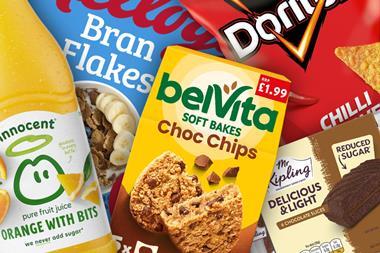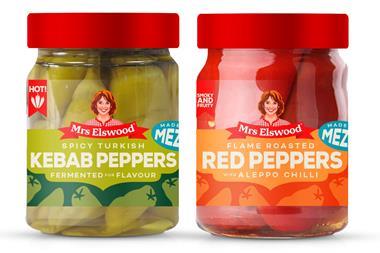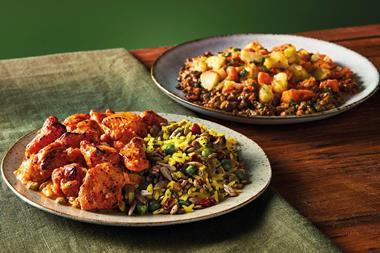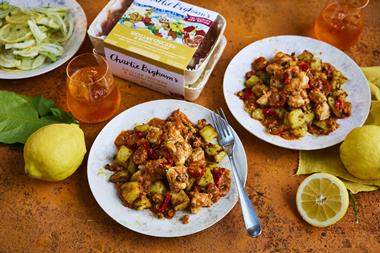The sauces and condiments category has been given a vigorous shake over the past year, most notably by Heinz and Premier Foods, which have both been busy trying to squeeze more value out of products that have been around for decades. First Heinz turned the category on its head with the purchase of the HP Sauce and Lea & Perrins brands, gaining what many regarded as a stranglehold on the category, only for Premier Foods to come out fighting with its Branston range of tomato and brown sauces.
Premier Foods' entry into the sauces category has been largely welcomed by companies concerned that Heinz's takeover of HP would monopolise the category but, nonetheless, some believe that it has had some negative consequences.
Ben Johnson, marketing director for The Grocery Company, which manufactures the Nando's range, explains: "The Branston offerings have required deep cut-price promotions to encourage trial. This will inevitably have taken sales from established brands and may have had a detrimental effect on category value."
According to Johnson, innovation is vital in a category that has almost 99% penetration, but he says that Branston has taken a less positive approach by entering the category with its own take on category stalwarts tomato ketchup and brown sauce.
Premier Foods, meanwhile, does believe Branston's arrival on to the top table of sauces has added that little bit extra. Far from just being a me-too product, it says, its ketchup contains 20% more tomatoes than Heinz's more famous product and the company was also the first to market brown sauce in a top-down format.
Inevitably, Heinz has been less impressed by Branston's encroachment into its territory. It claims that sales of its sauces have been unaffected by the new kid on the block. "Heinz certainly hasn't loosened its grip on the ketchup category and value sales have increased by 8.8% in the past year," says Laura Groves, Heinz brand manager for tomato ketchup. "Branston still has a long way to achieve its stated target of obtaining 10% market share in tomato ketchup by 2008."
At present Heinz does appear in a position to gloat. Its top-down tomato sauce, which hit shelves just over three years ago, is now the best-selling brand within the total sauces and condiments category, according to TNS [52 w/e 18 June 2006]. The company has also turned around the fortunes of Lea & Perrins by encouraging consumers to use the brand with new foods, and it is back in growth for the first time in three years. Value is up 3.6% and penetration rose 8.4% in the past year [IRI 52 w/e 20 May 2006].
Brand manager Jennifer Harke says: "We understood that to create long-term brand growth we needed to provide consumers with more than just recipe ideas. The £2m Tips+ campaign, which provides recipe hints and tips that are easy to understand, represents a change in strategy and illustrates how Lea & Perrins can be incorporated into the everyday cooking experience.
"The push has been phenomenal and delivered a sales uplift that far exceeded expectations."
Indeed, most of the major players have reason for cheer. TNS reports a 3.2% value growth for the category, which now sits at £550.9m, boosted by the World Cup and some fantastic weather, which lent itself to barbecue usage. All sub-categories are in growth, it says, with pickles, mustard and table sauces performing particularly well.
The market has also benefited from a general trend for premium products and from the endless number of ethnic, spicy and speciality products which have continued to spill on to retailers' shelves.
"Consumers are becoming more and more adventurous with what they are eating and what they are adding to their food," says Sue Knight, general manager for pickles and sauces at Premier Foods. "They are constantly looking for new ways to liven up their meals and, as a result, are turning to brands with different products and interesting flavours."
Knight adds that, while the category is made up of a number of better-for-you options, most notably light mayonnaise and salad dressings, it has largely managed to stay clear of the health agenda that continues to impact on most other food and drink categories.
"While the category will have been affected by the media focus on food issues and greater awareness of the need for healthy eating, condiments and table sauces in particular are used in small quantities," she says. "Consumers continue to buy standard products and see them as a quick and easy way of livening up their meals."
The thick and thin sauces sector, which includes Worcester, tomato and brown sauces, accounts for the biggest chunk of the category with 34.3% of all sales. But while growth is a respectable 4.2%, it is pickles that are producing the strongest figures, with sales up 10.6% to £69.2m, thanks to an uplift in chutney and relish sales.
Brand loyalty plays a big part in the category, with sauce consumers being particularly fussy, says Mike Miller, business operations manager at Unilever UK Foods. "This is a popular category that creates a huge amount of consumer enthusiasm," he says. "Everyone has their favourite sauce, which they cannot do without and which they use to personalise their meals. Because of this, consumers rarely compromise in this category. If their preferred product is unavailable they will simply do without until their next shopping trip."
To avoid lost sales, Miller encourages retailers to focus on maximising availability by managing the breadth of their range and reviewing the space on a seasonal basis.
The Grocery Company's Johnson also points to merchandising, saying that it would take only simple techniques, such as careful siting of products and brand blocking, to deliver incremental category sales and profit.n



















No comments yet